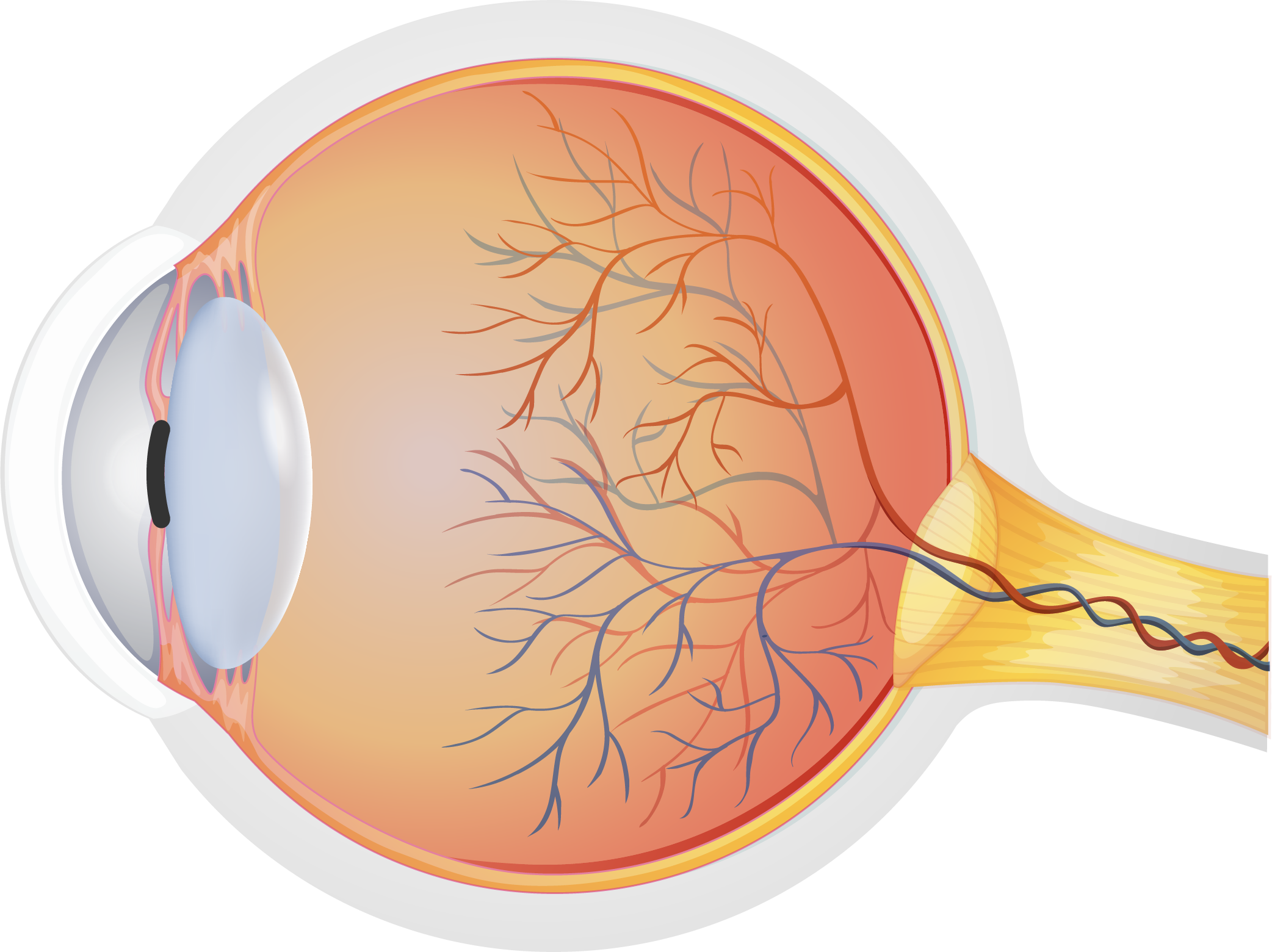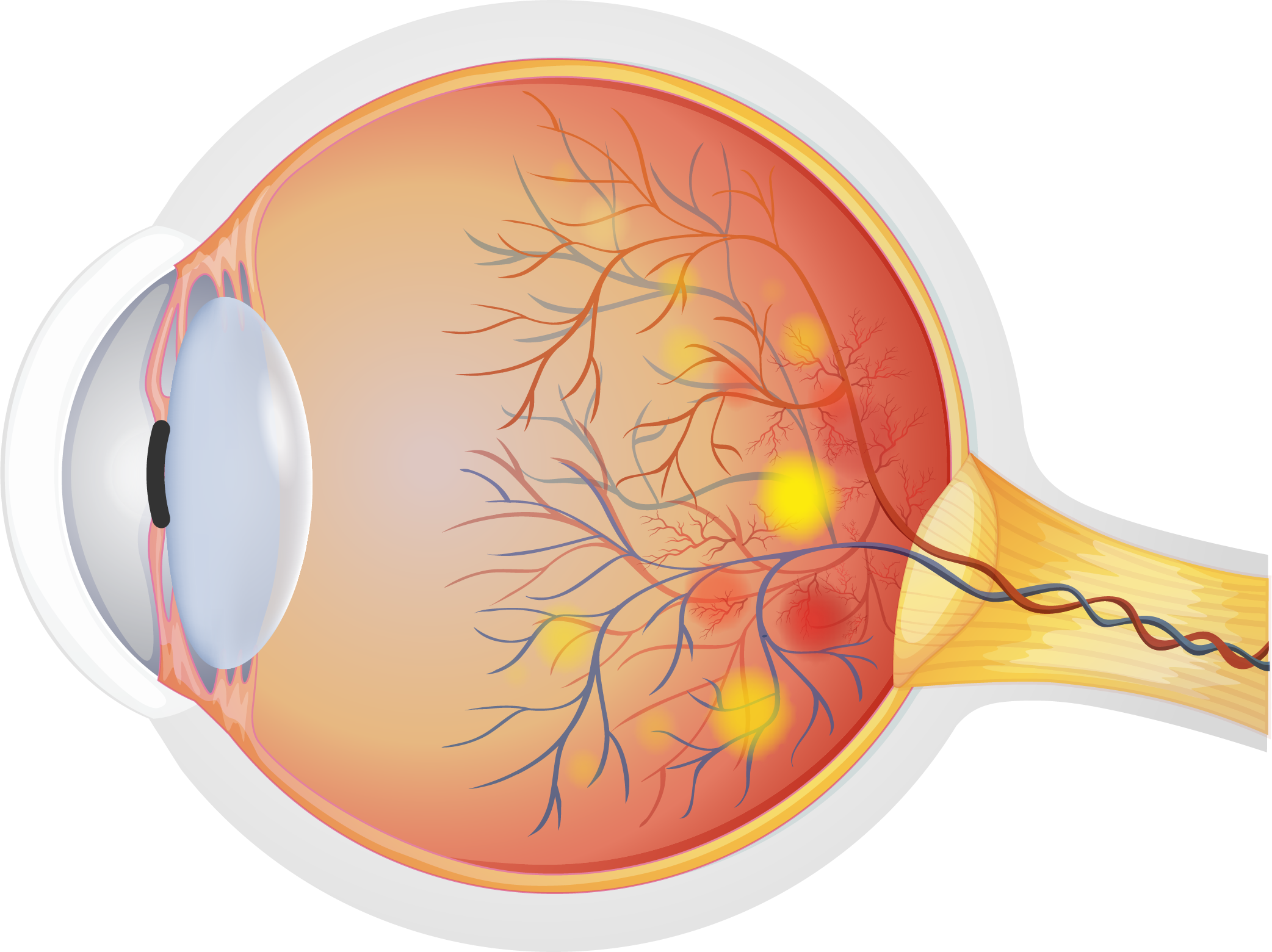Ophthalmological diseases
Here you can discover the most important eye diseases and we will help you to recognise their symptoms and tell you how each condition is treated.
Diabetic retinopathy
What is diabetic retinopathy?
Diabetic retinopathy is an eye disease that is caused by damage to the retina resulting from high levels of sugar in diabetic patients. Due to the high concentration of blood sugar in the blood vessels surrounding the retina, they can swell and leak fluid —or, conversely, close and block the blood flow—, which can cause loss of vision. High blood glucose levels, duration of diabetes and high blood pressure are risk factors for developing diabetic retinopathy.

Healthy eye

Diabetic retinopathy
Symptoms
Diabetic retinopathy does not usually present symptoms in its initial stages and in many cases, they appear once the situation is already serious. It is therefore very important to see an ophthalmologist immediately if any of the following symptoms are present, which tend to occur in both eyes:
Treatment
As this disease is closely linked to diabetes, its treatment often requires regular monitoring of blood sugar levels and blood pressure by a doctor. Diet and administration of prescribed drugs are also frequently monitored.
In other cases, laser surgery is often used to seal or reduce the swelling of the affected blood vessels and increase the blood supply to ischaemic areas (without blood supply).
In more advanced cases of diabetic retinopathy, a vitrectomy may be the best option, which consists of removing the intraocular vitreous gel to ensure the light rays focus properly on the retina.
The injection of intraocular drugs can be very effective in specific cases.

